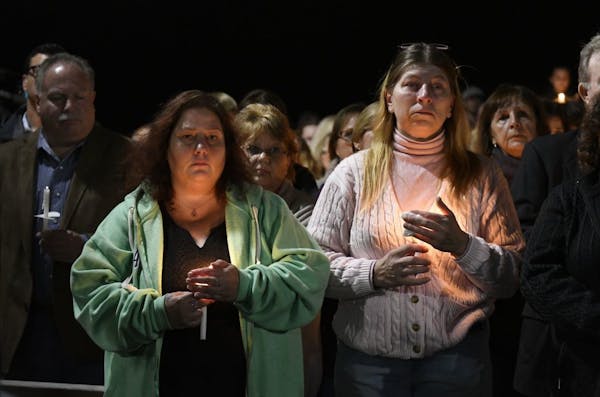When renting a limo for a birthday bash or prom night, Minnesotans can make sure it's been checked out by the state to feel safer before piling in. It can be as easy as glancing at the windshield.
State-issued decals show which for-hire limos have been registered with the Minnesota Department of Transportation (MnDOT) and passed an annual safety inspection — safeguards that appear to have been flouted in New York, where officials say a limousine involved in Saturday's crash that killed 20 people wasn't supposed to be on the road.
The vehicle had failed a state inspection last month, and the driver didn't have the right license to be operating the limousine, New York's governor said Monday.
Outside of federal regulations, limo laws can vary by state. In some states, cities regulate limos, rather than a state agency like MnDOT, said Laura Roads, a staff attorney at MnDOT.
In Minnesota, limousine companies must get a $150 state permit, register each vehicle on the road and undergo yearly inspections. MnDOT regulates and licenses 346 limo operators, with 1,043 vehicles registered with the state.
Limo operators are on the hook for making sure drivers meet state standards, including checking into driving records and criminal backgrounds.
Drivers, for instance, must be at least 18 and generally free of certain medical conditions that could affect their ability to drive safely.
MnDOT can help consumers vet companies, answering questions about whether a limousine company is registered and what its safety record is, said Ted Coulianos, deputy director of commercial vehicle operations at MnDOT.
During annual inspections, investigators check for "all the obvious safety things," including making sure the tires aren't bald and that the lights all work correctly, Coulianos said Monday.
But if a company has for-hire limos on the road and hasn't been OK'd by the state, officials said, they are generally likely to find out about it from a complaint by a customer or competitor. It could result in a citation.
"We have very limited enforcement abilities," Coulianos said.
Despite state precautions, companies can slip through the cracks.
A limo crash in 2014 in Cottage Grove that injured eight people, three seriously, involved an Eagan-based operator that had no permit for a limousine service and a driver that wasn't legally qualified to drive one for business.
Records show the company's permit had been suspended in October 2011 for failing to maintain insurance coverage and was revoked for that same reason two months later.
Since January 2017, 283 permit holders have had their permits suspended or revoked, according to MnDOT — a number that Coulianos said seemed "pretty high."
State officials said Monday they would like to know more about that number and what's behind it. They said administrative issues such as a failure to notify MnDOT of valid insurance are commonly behind suspensions.
"In general, we have a fairly good compliance rate with the limousine industry," Coulianos said. "It's a competitive environment, and they are not going to want to cut corners."
Hannah Covington • 612-673-4751

Want to share info with the Star Tribune? How to do it securely

'Safe recovery sites' would offer syringes, naloxone and more to people using drugs. The plan could be in peril.
New Minnesota GOP leaders seek peace with party's anti-establishment wing

Who is Republican Lisa Demuth, Minnesota's first House speaker of color?

